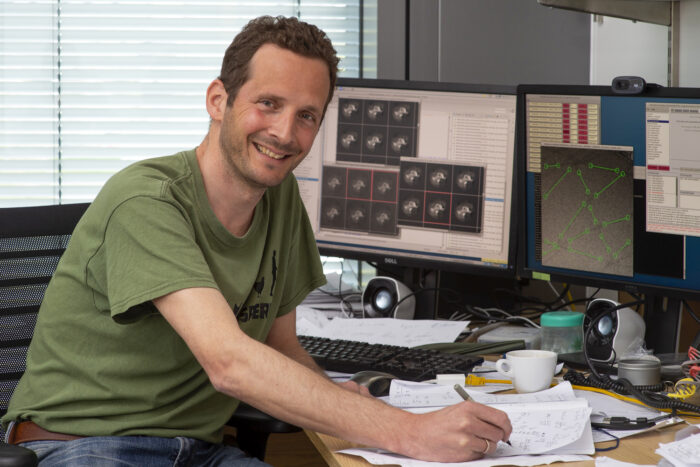
Sjors Scheres, Group Leader and Joint Head of the Structural Studies Division at the LMB, has been elected into the Fellowship of the Academy of Medical Sciences.
Also elected was Andres Floto, Group Leader within the University of Cambridge’s Molecular Immunity Unit housed at the LMB. Andres is also Professor of Respiratory Biology at the University of Cambridge and co-Director of the Cambridge Centre for AI in Medicine.
The Academy of Medical Sciences is an independent body based in the UK. Their focus is to drive advances in the translation and implementation of research on health to reach and benefit society, recognising and representing a broad range of research fields across medical science. Fellows are elected from various disciplines, including laboratory research, clinical academic medicine, and nursing care. The Academy also recognise professions associated to medical science, such as ethics, social science and law. Fellowship elections are given for outstanding, original discovery, or sustained contributions to the advancement of medical sciences.
Sjors’ research focuses on visualising protein structures to better understand both their normal function and their role in disease. His development of novel image processing methods has spearheaded the advancement of cryo-EM to record breaking resolutions. His open-source computer programme called RELION implements these methods and has been used around the world to solve protein structures to atomic resolutions.
Alongside this, Sjors also has a longstanding collaboration with Michel Goedert in the LMB’s Neurobiology Division. Together, they utilise Sjors’ image processing developments to map filaments from the brains of individuals with varied neurodegenerative disease filaments. These include amyloid filaments formed in Alzheimer’s disease or chronic traumatic encephalopathy (CTE) and through their work, they discovered particular patterns of tau filament folds in different diseases. As well as tau, another protein of interest is the alpha-synuclein filament in human brains which is involved in multiple system atrophy (MSA), Parkinson’s disease and dementia.
Sjors commented “I am truly honoured to have been elected a Fellow of the Academy of Medical Sciences. Having started my career with purely computational image processing, it is fantastic to see that the medical relevance of our work is recognised in this manner.”
Sjors studied Chemistry at Utrecht University in The Netherlands, where he also did a PhD in protein crystallography. He then joined the National Centre of Biotechnology of the CSIC in Madrid, Spain as a postdoctoral researcher, before joining the LMB in 2010.
Sjors was elected as a member of the European Molecular Biology Organisation (EMBO) in 2017 and as a Fellow of the Royal Society in 2021. His outstanding contributions to the field of structural biology have been recognised in numerous awards, including the Bijovet Medal in 2018, the Leeuwenhoek Medal from the Royal Society in 2021, and the Biochemical Society 2022 AstraZeneca Award.
Sjors is the 22nd LMB scientist to be honoured with this election since the Academy’s formation in 1998.
In addition, Sjors has been elected as a foreign member of The Royal Netherlands Academy of Arts and Sciences (KNAW). Since the Academy began, it has supported outstanding Dutch scientists and scholars who are awarded life-long membership based on their scientific and scholarly achievement. Nominations may be submitted by members and non-members. Congratulations once again, Sjors.
Further references
Sjors Scheres’ group
Michel Goedert’s group
Academy of Medical Sciences
The Academy of Medical Sciences Press Release
LMB Fellows of the Academy of Medical Sciences
The Royal Netherlands Academy of Arts and Sciences (KNAW)